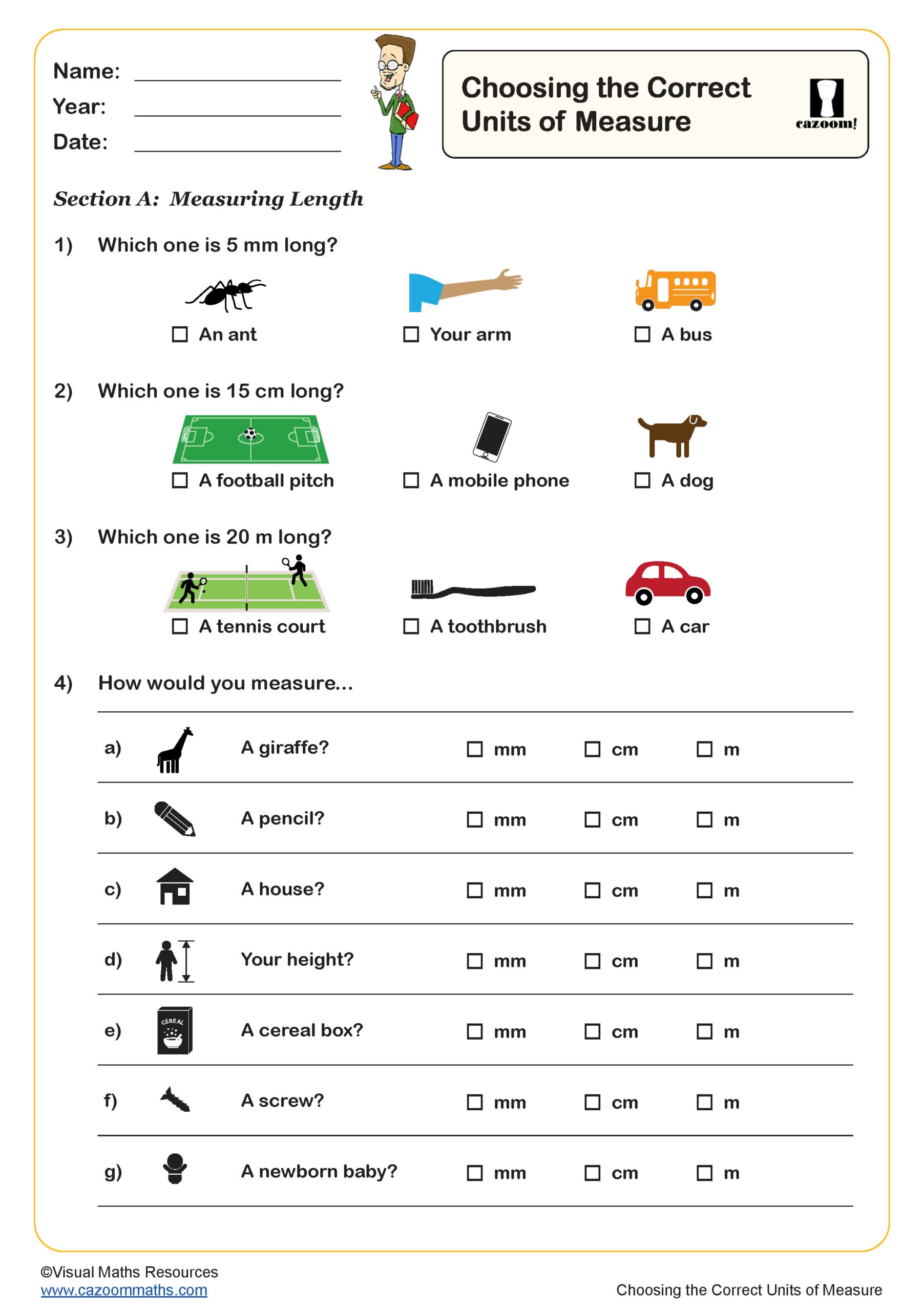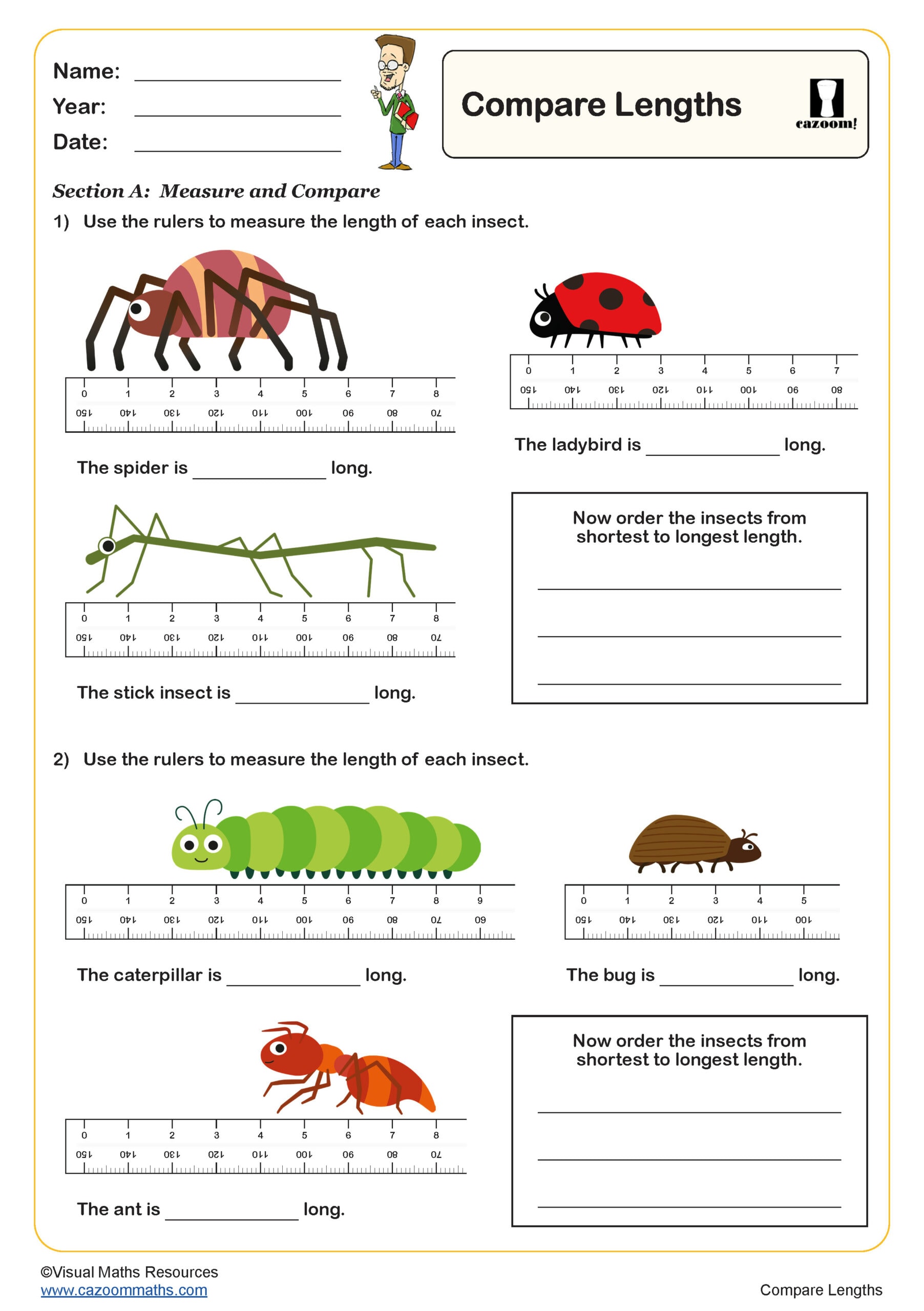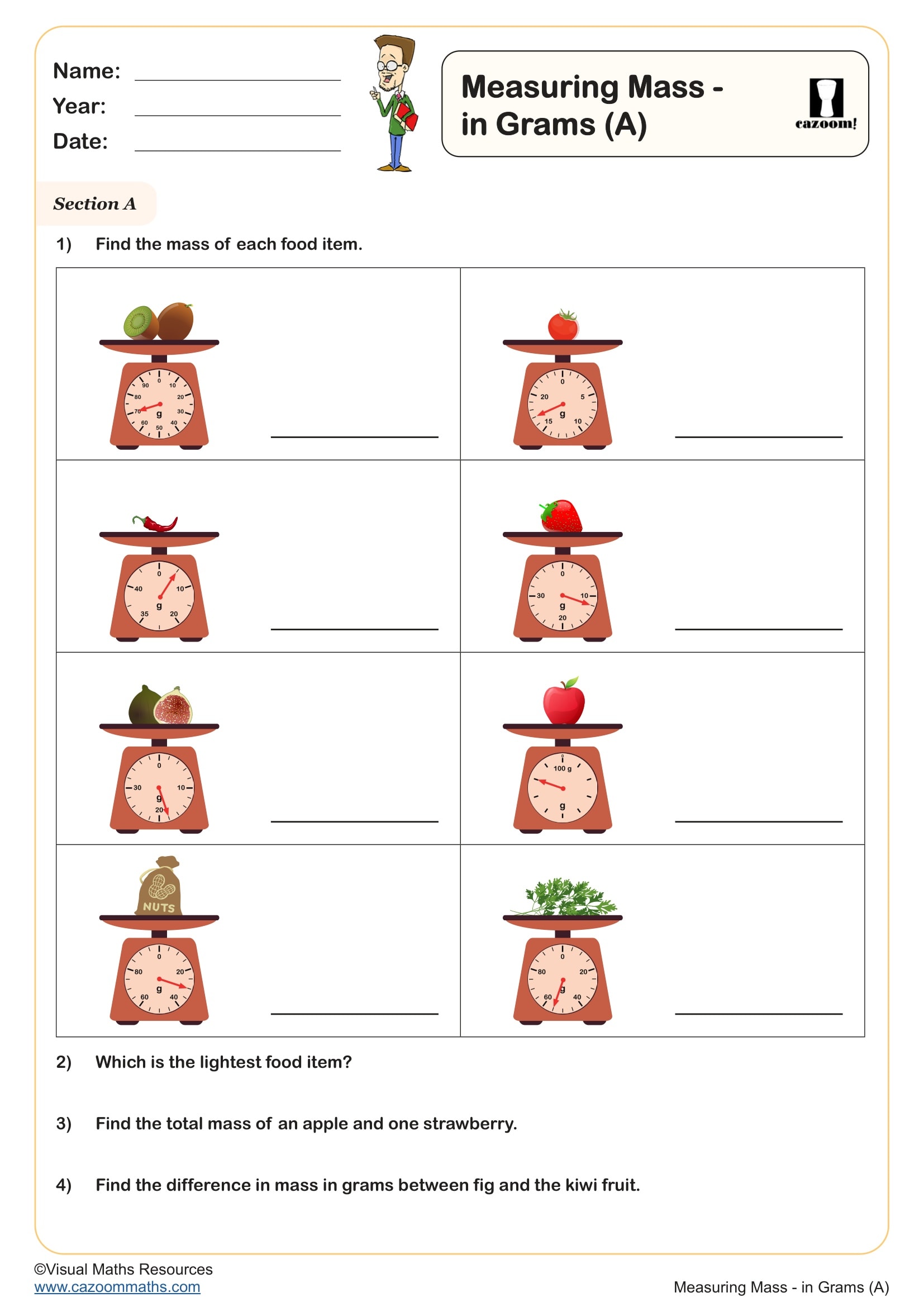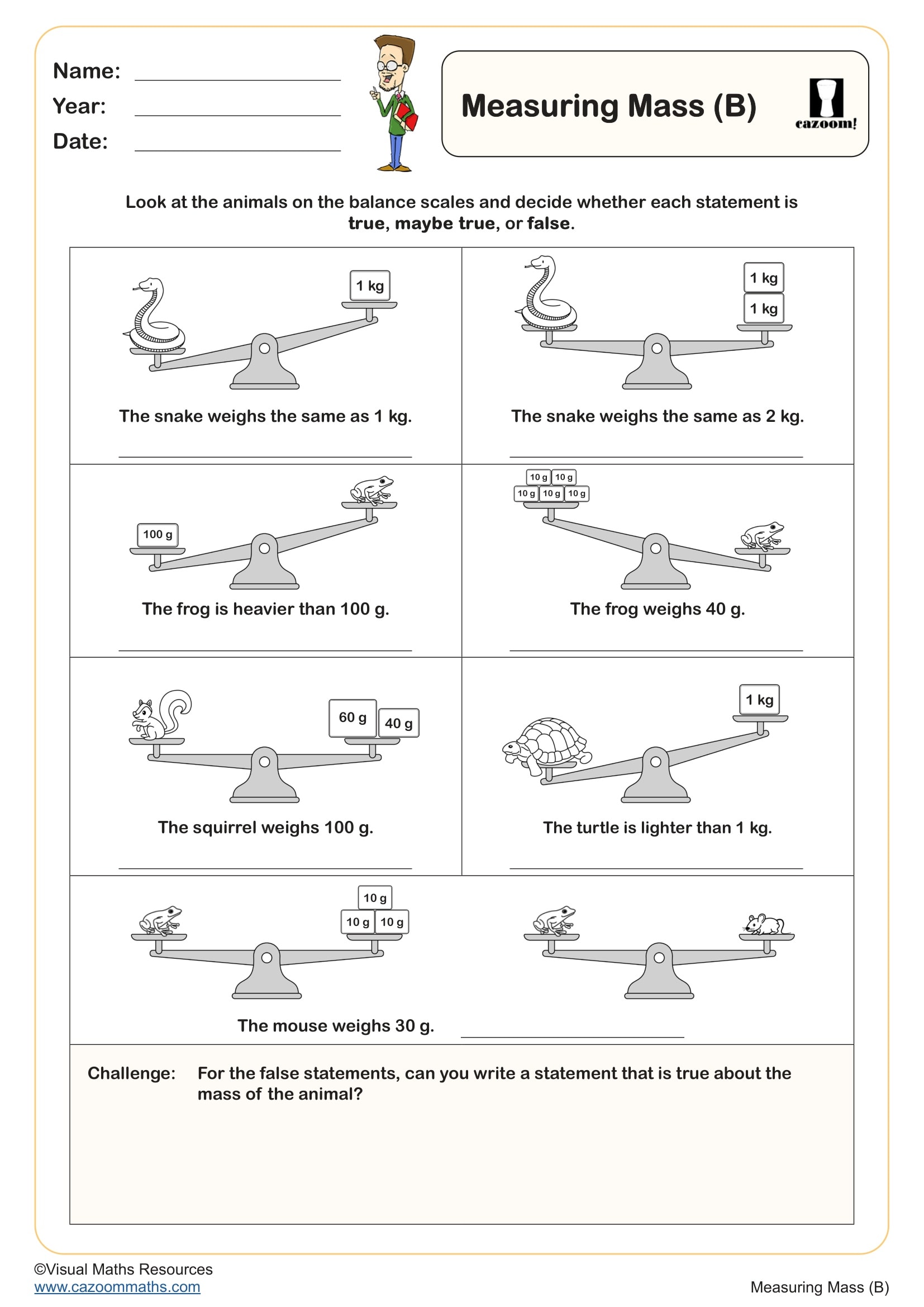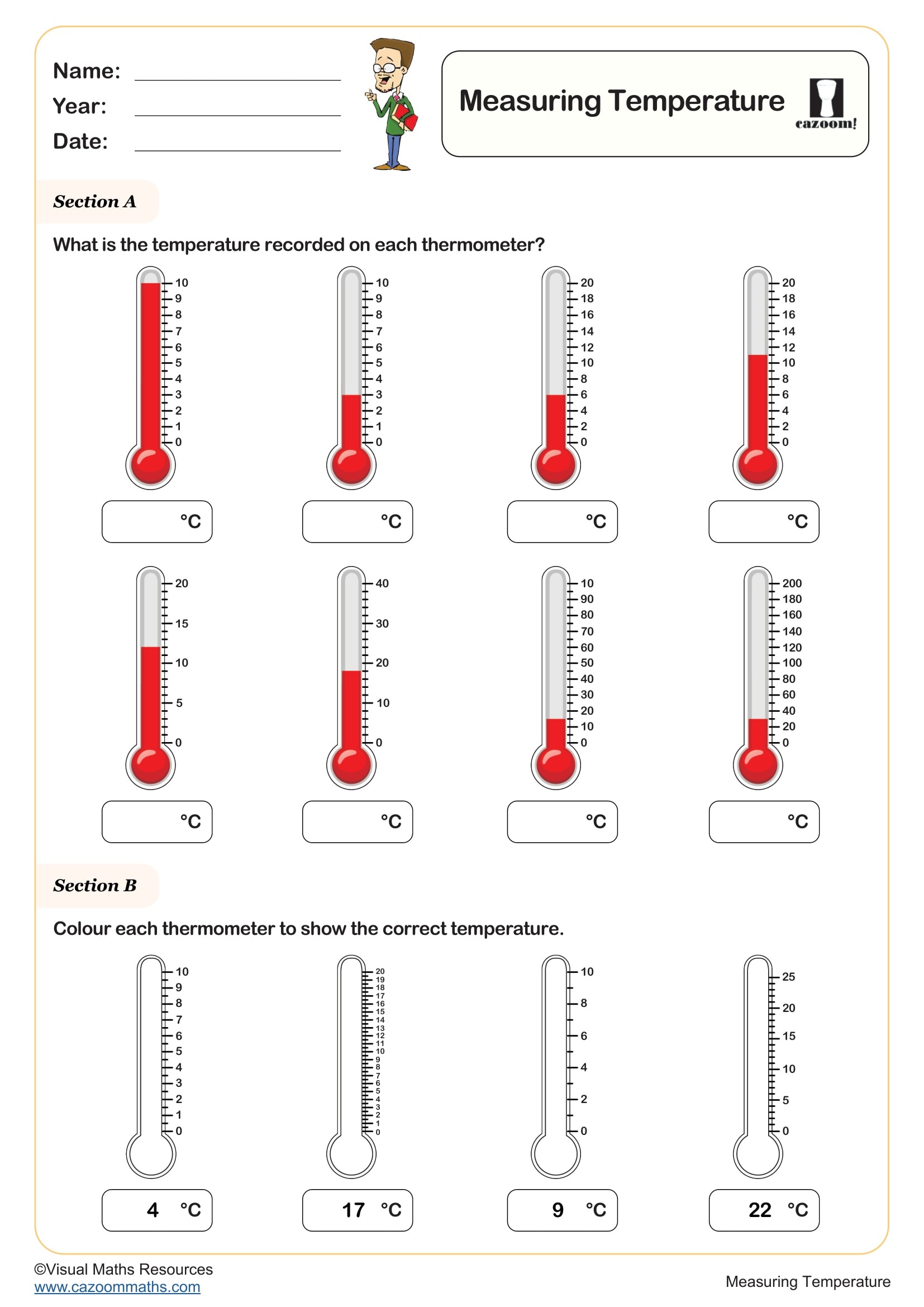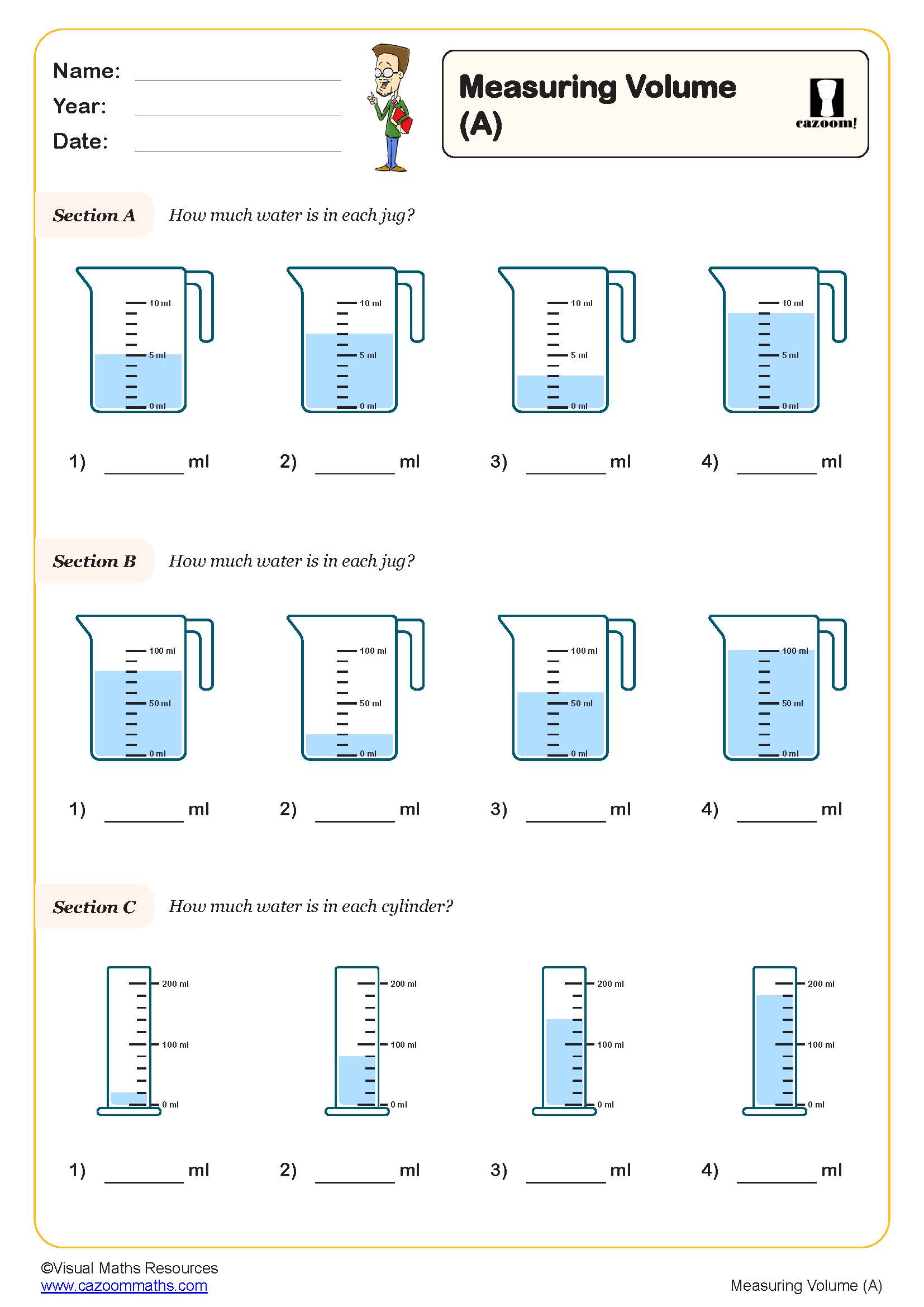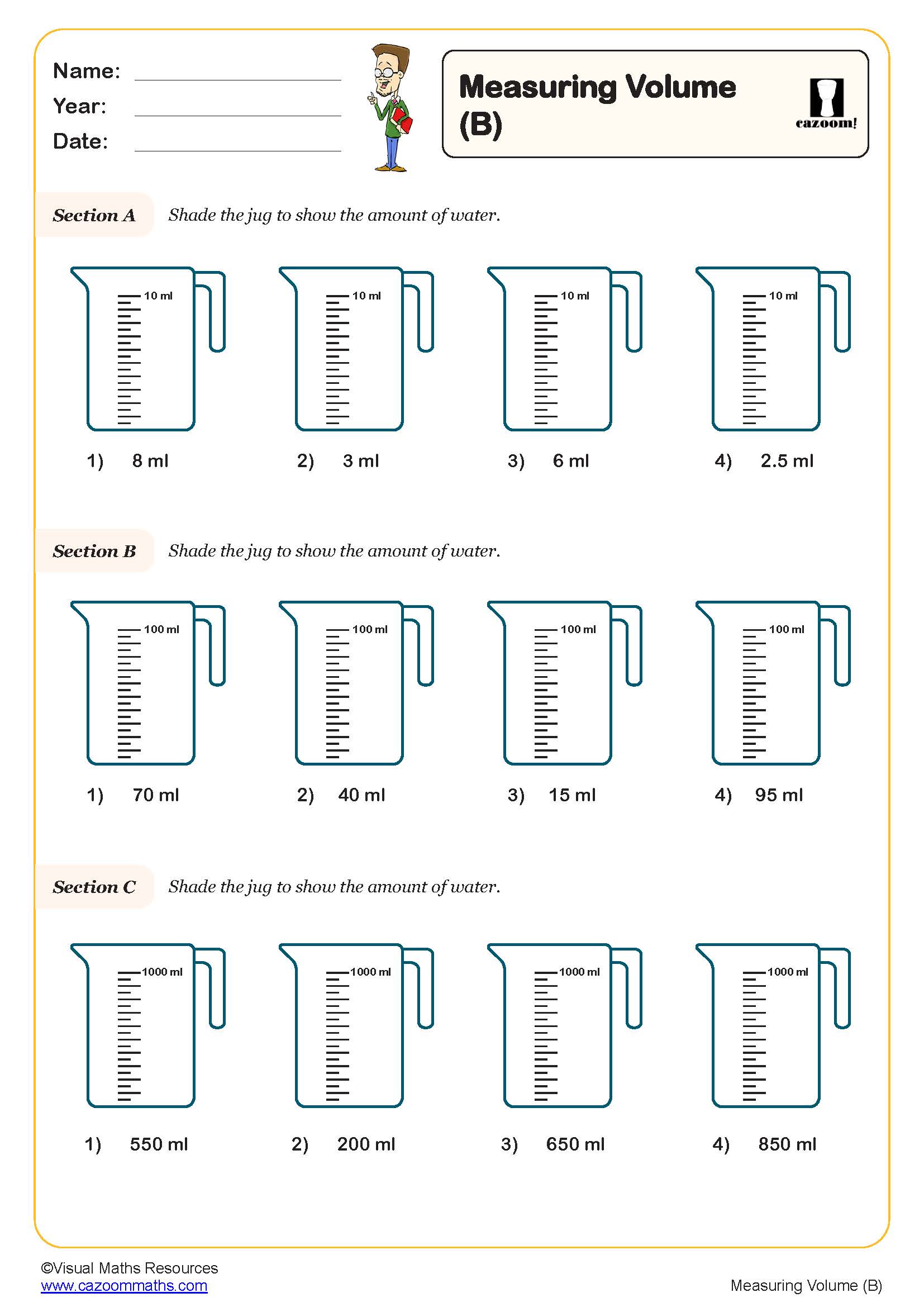Year 2 Metric Measures Worksheets
Download Year 2 Measurement Worksheets PDF with Step-by-Step Solutions
Finding quality measurement worksheets and Year 2 PDF resources that actually engage young learners isn't easy. These ready-to-use, printable worksheets tackle everything from basic centimetre recognition to comparing lengths, all with detailed answer sheets that show the thinking process. Students particularly love the visual elements that make abstract measurement concepts click into place.
Essential Measuring Skills Your Year 2 Class Will Master
Metric measurements are a decimal-based system of measurement used worldwide for measuring length, weight, volume, temperature, and other quantities. It's the standard system used in the UK and most countries globally.
We have designed these worksheets to follow a natural learning progression. Students start by learning to read centimetre marks on rulers, then move on to measuring simple objects like pencils and books. The comparison activities are always a hit - there's genuine excitement when children discover that the red crayon is actually 2 cm longer than the blue one! Each worksheet carefully builds on previous skills, gradually introducing trickier scenarios like measuring curved objects or working with mixed units.
Why Year 2 Students Thrive with Regular Measurement Practice
Here's what we have noticed after years of teaching measurement: students who get consistent practice with measurement worksheets and Year 2 centimetres activities show remarkable improvement in spatial awareness. The connection between regular practice and confident measuring is undeniable, especially when it comes to KS1 assessment preparation.
Key benefits include:
• Improved estimation skills that transfer across subjects
• Stronger number sense when working with centimetres and metres
• Enhanced problem-solving confidence in practical situations
• A better understanding of the relative size and scale concepts
• Increased accuracy when using measuring tools independently
Real-World Connections That Make Measurement Matter
The truth is that measurement skills pop up everywhere once you start looking. We have seen students excitedly measuring everything from playground equipment to their own growth charts after working through these activities. It's quite rewarding watching them make those natural connections between classroom learning and everyday life.
The concept of Measurement appears in:
• Art projects requiring specific lengths and proportions
• PE activities involving distances and heights
• Science experiments measuring plant growth or materials
• Design technology when creating and building models
• Geography work understanding map scales and distances
• Home situations like cooking, gardening, and room planning
